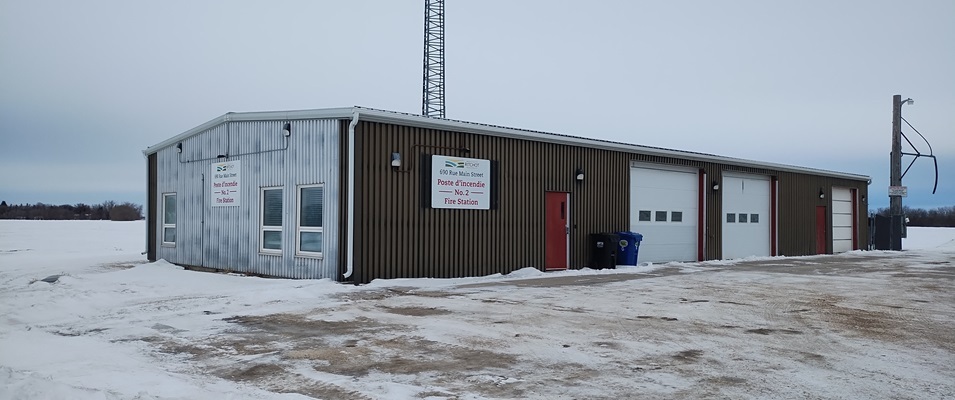
Next year, commuters heading east along Highway 311 towards Blumenort can expect a new round of construction, this time due to a roundabout being built at the intersection of Highway 206, which takes motorists to Landmark.
“The intersection project planned for next year is currently in the design phase and will entail implementing a roundabout,” says a spokesperson for Manitoba Transportation and Infrastructure (MTI). “MTI anticipates construction on this project to begin in summer 2025.”
Over the years, this intersection has seen the addition of more and more safety measures in response to a high incidence of accidents. These measures began with flashing lights added to the stop signs, followed by rumble strips along Highway 206. On the Highway 311 approach, speed reduction signs were eventually installed.
Since then, the intersection has become a four-way stop.
“MTI implemented a four-way stop control at the intersection in spring 2024,” the spokesperson adds. “This was done to support the Manning Canal bridge construction project. Following the bridge construction, a review concluded that the department’s preferred course of action is to continue the four-way stop control until the planned project to reconstruct this intersection begins.”
As to their decision to create a roundabout here, MTI did not provide the reason. However, it doesn’t take an engineer to notice that roundabouts are becoming a common traffic feature in both rural and urban landscapes.
Driving through newer Winnipeg neighbourhoods will inevitably uncover many roundabouts at intersections where four-way stops would once have been installed. The new overpass at south St. Mary’s Road incorporates two roundabouts.
Niverville is also expected to soon see a highway roundabout included in the Highway 311 west reconstruction.
Engineers hired for the design of the Niverville project, Morrison Hershfield, say the prolific use of roundabouts has everything to do with their overall safety records.
In a four-way controlled intersection, whether stop light or stop sign, there is a potential for up to 32 conflict points between vehicles driving in opposing directions. According to Morrison Hershfield, a roundabout reduces those conflict points to only eight.
Additionally, the roundabout acts as a natural speed controller, forcing drivers to slow down, which prevents accidents that occur from illegally running lights or stop signs. When used effectively, they also reduce the wait in traffic queues and make U-turns easier and safer.
While the introduction of roundabouts might feel relatively new in Manitoba, they have been in use around the world for decades. The first roundabout is believed to have been constructed in the U.K. in the 1950s.
Still, when you introduce a relatively new traffic feature, some initial scepticism should be expected.
An informal online poll of residents in Niverville and Ritchot reveals that a majority of drivers actually prefer the roundabout to the four-way stop. Those who would call themselves non-believers tend to assume that position because of other drivers’ inexperience.
While roundabouts may at first seem intimidating, a few key concepts will help any driver use them safely and effectively.
First and foremost, it is wise to slow down when approaching a roundabout, similar to the slowdown one might employ when approaching any yield.
Second, drivers must yield to traffic already in the roundabout. Those within the roundabout always have the right of way. However, coming to a full stop before entering a roundabout is only necessary if the proximity of a vehicle prevents you from safely merging.
Once in the roundabout, drivers are to keep right upon entering and move only in a counterclockwise direction. Be sure to use your signal light when approaching your exit.
It’s important to never stop or reverse direction in a roundabout. If a driver misses their turn, they may continue circling until they arrive at their exit the next time around.
Finally, it’s important to understand how to respond when you see an emergency vehicle approaching a roundabout. If you have not yet entered the roundabout, treat the situation like any other intersection. Pull to the side and don’t enter until the emergency vehicle has exited the roundabout. And if you’re already in the roundabout when you spot the emergency vehicle, continue through and exit as soon as you reach your turnoff. Do not stop or attempt to pull over within the roundabout.
While these basic rules apply to all single-lane roundabouts, in two-lane roundabouts an additional rule applies. Simply put: keep to the left lane until you’re nearing your exit. This allows vehicles entering the roundabout to assume the right lane instead of waiting for you to pass.


















